An inglorious end for a wonderful Villa
 The Marsaglia Park is what remains (and is already a great thing) of an extraordinary property, which, at the edge of Via Roccasterone (formerly Roverizio di Roccasterone) concluded a superb allotment near the Berigo hill.
The Marsaglia Park is what remains (and is already a great thing) of an extraordinary property, which, at the edge of Via Roccasterone (formerly Roverizio di Roccasterone) concluded a superb allotment near the Berigo hill. 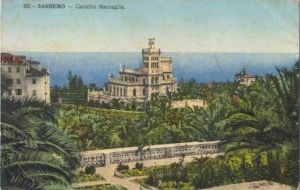 Everything was linked to the convergence of interests of two families, the Sanremo family of Roverizio di Roccasterone and the Piedmontese family of Marsaglia.
Everything was linked to the convergence of interests of two families, the Sanremo family of Roverizio di Roccasterone and the Piedmontese family of Marsaglia.
The Roverizio family was a noble family of recent lineage, descended from Ceriana to San Remo at the beginning of the eighteenth century, strong with considerable land properties. Count Stefano Roverizio of Roccasterone, after 1870, committed himself to the construction of the first small villas in the west of San Remo, because of his numerous sonship: all females, all well married.
His mother, Adele Bianchi, was the promoter of elite residential tourism in San Remo.
In this family context, the triple marriage of the Roverizio family with the Marsaglia brothers, Adele and Luigi, Giuseppina and Giovanni, and Eugenia and Ernesto.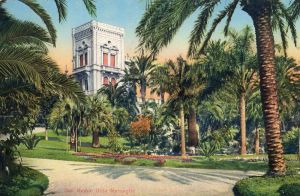 Giovanni Marsaglia was the main supporter of the construction of the monumental residence in the form of a castle. Engineer, he was a specialist in the construction of tunnels, knowing the complex problems of the Ligurian railway of Ponento (completed in 1871). He was also involved in Sanremo's urban
Giovanni Marsaglia was the main supporter of the construction of the monumental residence in the form of a castle. Engineer, he was a specialist in the construction of tunnels, knowing the complex problems of the Ligurian railway of Ponento (completed in 1871). He was also involved in Sanremo's urban 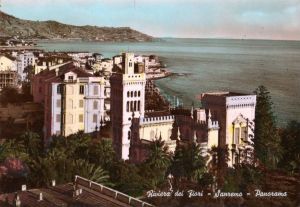 plans and in solving the problem of the city's water supply, solved with a monumental aqueduct, still in use today (1883).
plans and in solving the problem of the city's water supply, solved with a monumental aqueduct, still in use today (1883).
Ernesto was instead a deputy and senator of the Kingdom of Italy.
The castle was built in 1882, based on a project by architect Pio Soli: the newly built Hotel Bellevue (1881) was demolished to accommodate the residential complex.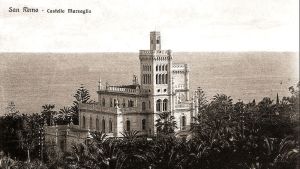 Period images reveal the marvels of this building, an extreme complex of towers, battlements and neo-Gothic and neo-Renaissance motifs, sculpted on a white background cut out between the green park and the placid sea. Inside, decoration and furnishings were no less impressive, thanks to the efforts of prestigious contemporary artists: Paolo Trubetzkoy, Edoardo de Albertis, Odoardo Tabacchi, Domenico Trentacoste and even Jean-Baptist Carpeaux, the famous French sculptor who was a friend of the Opera architect, Charles Garnier.
Period images reveal the marvels of this building, an extreme complex of towers, battlements and neo-Gothic and neo-Renaissance motifs, sculpted on a white background cut out between the green park and the placid sea. Inside, decoration and furnishings were no less impressive, thanks to the efforts of prestigious contemporary artists: Paolo Trubetzkoy, Edoardo de Albertis, Odoardo Tabacchi, Domenico Trentacoste and even Jean-Baptist Carpeaux, the famous French sculptor who was a friend of the Opera architect, Charles Garnier.
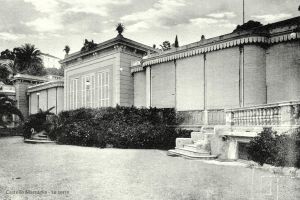 Some of the annexes completed the building system: we can remember the greenhouse and a dunghill, a sign of the attention with which the garden was cared for and above all the sowing in the nursery.
Some of the annexes completed the building system: we can remember the greenhouse and a dunghill, a sign of the attention with which the garden was cared for and above all the sowing in the nursery.
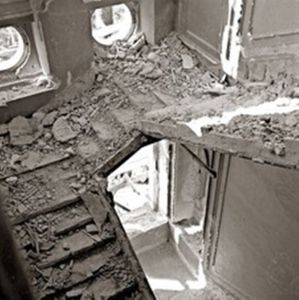
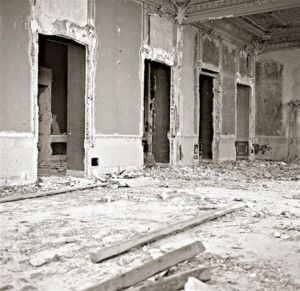
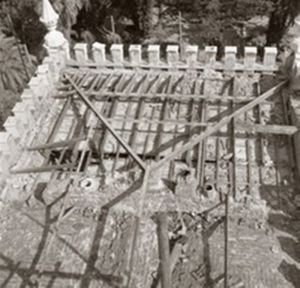 After the last world war the castle and the garden became the property of the Municipality and after the wretched demolition of the building, all the portals, arches, columns, marble and stones of the Marsaglia Castle were dismantled and numbered in anticipation of a possible and faithful reconstruction of the building elsewhere.
After the last world war the castle and the garden became the property of the Municipality and after the wretched demolition of the building, all the portals, arches, columns, marble and stones of the Marsaglia Castle were dismantled and numbered in anticipation of a possible and faithful reconstruction of the building elsewhere.
This at least, in the intentions of the administrators.
The material was deposited in Valle Armea, near the current Supermarket, from where, piece by piece it disappeared into thin air.
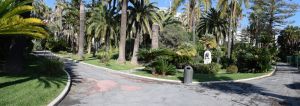
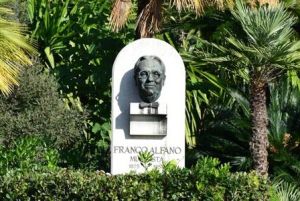 The large and flourishing surrounding garden has since then been known as "Parco Marsaglia", a park that possesses a botanical and floristic richness of tropical taste more unique than rare.
The large and flourishing surrounding garden has since then been known as "Parco Marsaglia", a park that possesses a botanical and floristic richness of tropical taste more unique than rare.
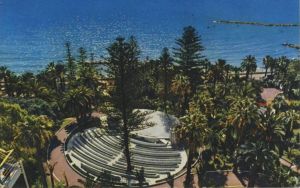
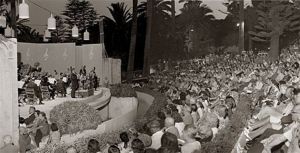 Within the park itself, a musical auditorium dedicated to Franco Alfano was created where, until a few years ago, very famous concerts and musical events took place.
Within the park itself, a musical auditorium dedicated to Franco Alfano was created where, until a few years ago, very famous concerts and musical events took place.
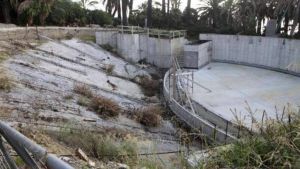 After years of complete abandonment due to legal and other controversies, renovation work has recently begun, even if the problems, also created for futile reasons, are not lacking to hinder their conclusion.
After years of complete abandonment due to legal and other controversies, renovation work has recently begun, even if the problems, also created for futile reasons, are not lacking to hinder their conclusion.
(source: text elaborated by several Authors; Images from Personal Archive)




